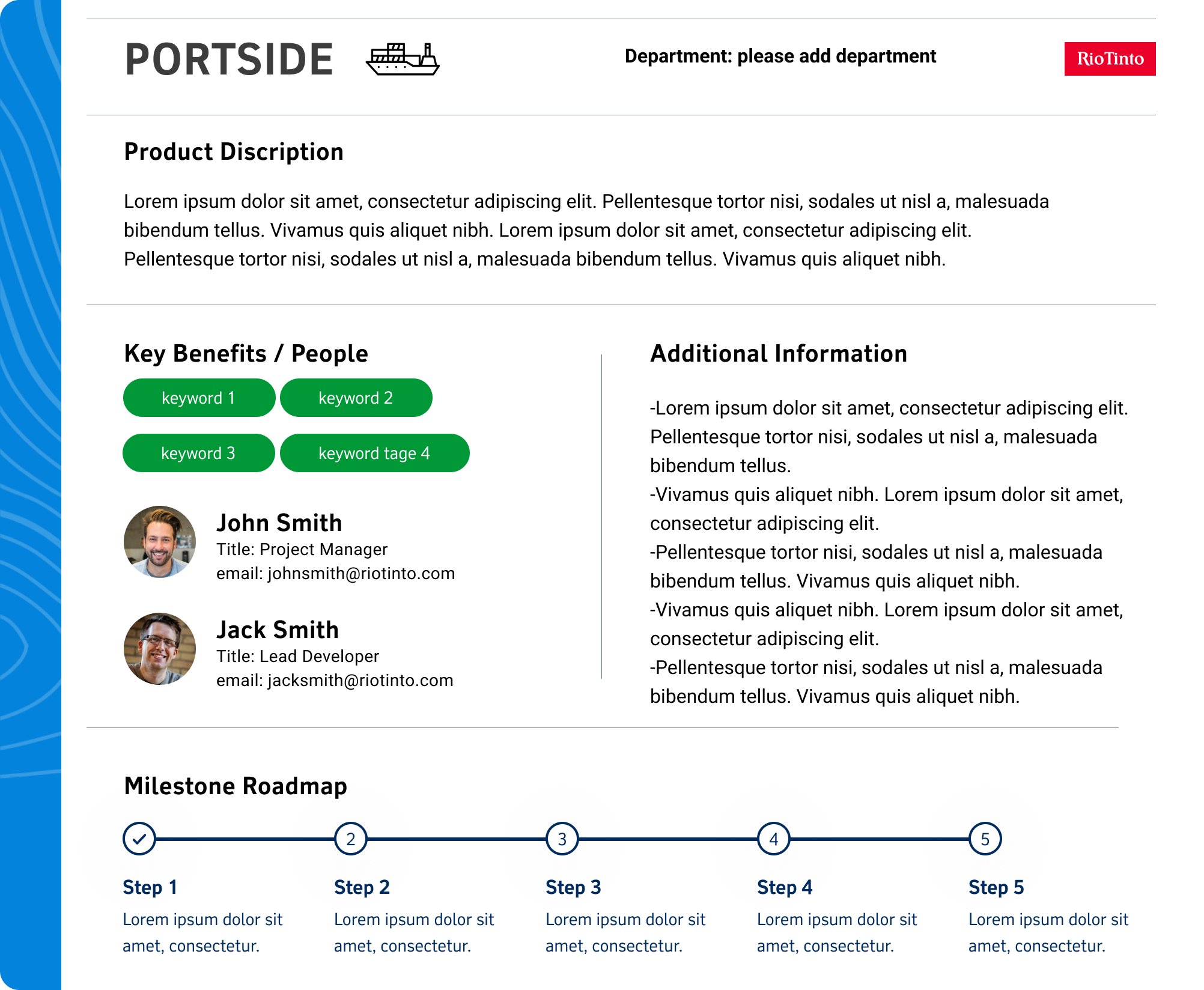Rio Tinto-Sharepoint Portal
As one of the foremost mining companies in the world, Rio Tinto is characterized by a multitude of moving parts, encompassing various teams, processes, projects, and products. The pivotal design brief for the Commercial Services & Digital Portal revolves around ensuring that teams remain cognizant of each other’s activities, roles, and contributions, thereby facilitating seamless collaboration and knowledge exchange.
Project cards
The initial inception of this knowledge sharing initiative stemmed from valuable feedback indicating that staff members lacked awareness of the ongoing projects within teams. As a result, the idea of implementing project cards for each team materialized, featuring a brief overview of the product, its primary advantages, team members involved, and supplementary details, supplemented by a milestone roadmap for comprehensive visibility.
After conducting thorough User Research to evaluate the potential impact and usefulness of the information, it was determined that the accessibility of these cards could be enhanced by integrating dedicated buttons within the internal intranet. The initial concept evolved into envisioning a more structured portal that individual teams could effectively manage. The sheer scale of Rio Tinto's operations necessitated a more formalized approach, given that crucial information was often dispersed across unwieldy Word or PowerPoint documents, stalling efficient retrieval. Consequently, the implementation of a Sharepoint portal was recommended as the optimal solution.
Further insights gleaned from the User Research revealed specific areas of interest for the users. In-depth user interviews made it clear that, besides a brief introduction and features, the most significant aspects revolved around the levels of contact within each product, access to any of the teams' trainings or helpful documents, and leadership maps. Armed with this valuable knowledge, the Sharepoint portal was strategically customized to comprehensively address these key areas, delivering indispensable support and guidance for the users.
Sharepoint Portal
With the knowledge gained from the user research, I began to meticulously structure the information architecture of each page. Although different teams would utilize the portal for varied purposes, a standardized screen flow consisting of 4 to 5 key areas—covering introductory content, supported applications, training documents, key contacts, organizational charts, and FAQs—was established. This uniform layout was then implemented across all teams, allowing them to tailor and populate the pages according to their specific needs.
Offering unwavering support to each team, I took charge of creating the initial page structures, providing them with the necessary time to gather relevant information, and then assisting in refining it for a more seamless web presentation, whether it involved crafting compelling copy, optimizing screen layouts, or designing graphics. Furthermore, I collaborated with each team to address any unique requirements they might have, such as developing videos or integrating Power BI apps into the pages.
Subsequently, comprehensive usability testing was carried out, involving new company additions or contractors, to garner fresh perspectives on the portal's significance to them. This feedback was then addressed and emended to the portal.
















